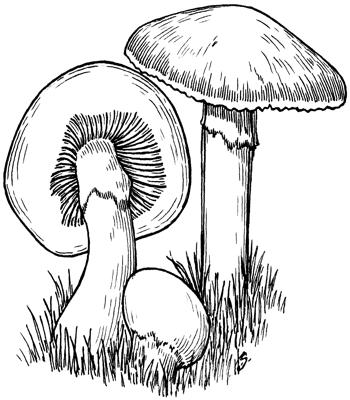The fungi constitute a unique kingdom of heterotrophic organisms. They show a great diversity in morphology and habitat. When your bread develops a mould or your orange rots it is because of fungi. The common mushroom you eat and toadstools are also fungi. White spots seen on mustard leaves are due to a parasitic fungus. Some unicellular fungi, e.g., yeast are used to make bread and beer. Other fungi cause diseases in plants and animals; wheat rust-causing Puccini° is an important example. Some are the source of antibiotics, e.g., Perticillium.
Fungi are cosmopolitan and occur in air, water, soil and on animals and plants. They prefer to grow in warm and humid places. With the exception of yeasts which are unicellular, fungi are filamentous. Their bodies consist of long, slender thread-like structures called hyphae. The network of hyphae is known as mycelium. Some hyphae are continuous tubes filled with multinucleated cytoplasm – these are called coenocytic hyphae. Others have septae or cross walls in their hyphae. The cell walls of fungi are composed of chitin and polysaccharides.

Most fungi are heterotrophic and absorb soluble organic matter from dead substrates and hence are called saprophytes. Those that depend on living plants and animals are called parasites. They can also live as symbionts – in association with algae as, lichens and with roots of higher plants as mycorrhiza.
Reproduction in fungi can take place by vegetative means -fragmentation, fission and budding. Asexual reproduction is by spores called conidia or sporangio spores or zoospores and sexual reproduction is by oospores, ascospores and basidlospores. The various spores are produced in distinct structures called fruiting bodies.
The sexual cycle involves the following three steps:
(i) Fusion of protoplasms between two motile or non-motile gametes called plasmogamy.
(ii) Fusion of two nuclei called karyogamy.
(iii) Meiosis in zygote resulting in haploid spores.











